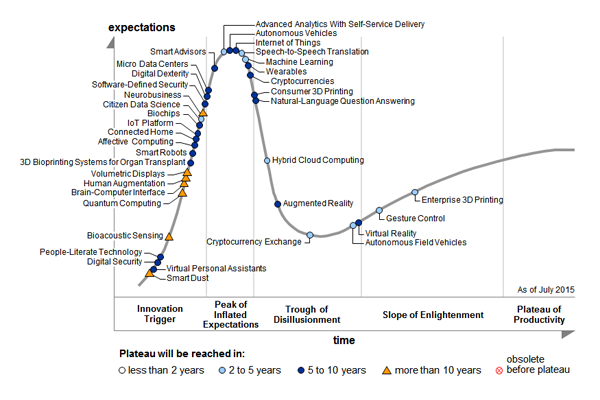Understanding the Internet of Things
Internet of Things is obviously one of the most talked about topics in the tech industry today. When I first read about it in an article, I was a bit confused. I wondered how everything (even a light bulb) can be connected to the internet and what purpose will it solve. Now, after a couple of years, after reading a few more articles, after attending a few trainings and after working on a few enterprise IoT projects, I believe I have a relatively better understanding of the subject. In this post, I will try to explain what IoT actually is, without going into the technical details. Just a hint — It’s not just about connecting a board to the cloud and making an LED blink on it. It’s much bigger and has a much wider span.
Let me first start with what Kevin Ashton, who coined the term, said about Internet of Things — here’s a piece from Kevin Ashton’s article in RFID magzine…
The fact that I was probably the first person to say “Internet of Things” doesn’t give me any right to control how others use the phrase. But what I meant, and still mean, is this: Today computers — and, therefore, the Internet — are almost wholly dependent on human beings for information. Nearly all of the roughly 50 petabytes (a petabyte is 1,024 terabytes) of data available on the Internet were first captured and created by human beings — by typing, pressing a record button, taking a digital picture or scanning a bar code. Conventional diagrams of the Internet include servers and routers and so on, but they leave out the most numerous and important routers of all: people. The problem is, people have limited time, attention and accuracy — all of which means they are not very good at capturing data about things in the real world.
Well, that was in 1999 when Kevin first spoke about IoT.
Today, when we look at IoT, it feels a bit different. What I infer from Kevin’s article is that IoT would be more about getting the data into the internet as human effort is not enough and/or good enough for it. But, today we are more focused towards utilizing its full potential instead of using it as an utility. We are more interested in analyzing the data coming to the internet and using that analysis to solve bigger problems. Making the data reach the internet, which was the initial purpose of IoT, has become just a starting point.
Let’s have a look at the hype IoT has created so far. Below is the Gartner hype cycle 2015…

That’s huge. IoT is among the top 5 most hyped technologies. More the hype, more the talk and vice versa. And because of this hype, there is also a lot of confusion about IoT. Most of the time we think IoT is all about having those cool devices gathering data and connecting to the internet. We are excited about connecting a board with a sensor and making that LED blink by running a program. Today, most of the IoT workshops and lectures are limited to this. Which, I think, is not enough. We are not looking at the bigger picture that IoT presents. As Rick Garibay says in his excellent article about IoT on Azure,
The thing is, the “Internet of Things” isn’t so much about things as it is about learning about systems in the context of their environments and learning from the information/data gleaned from devices deployed in these environments.
And to me, that makes perfect sense.
Now, about my understanding of IoT. I believe it is a combination of automation and data analytics. Let’s break the notion of IoT into two logical function,
- Devices in the wild gathering data about themselves and their surroundings and sending it to the internet. [AUTOMATION]
- Analyzing the data sent by the devices and deducing patterns and results out of it. [DATA ANALYTICS]
One more thing that I feel helps create more excitement, motivation and hype about IoT is the availability of super powerful data analytics tools and highly scale-able cloud computing platforms. Well, IoT was being talked about in ’99 and on and off since then but it gained popularity and hype only after mid 2000s when we were well versed with cloud platforms and data analytics. And this also supports that IoT is more about the data instead of the internet or the things.